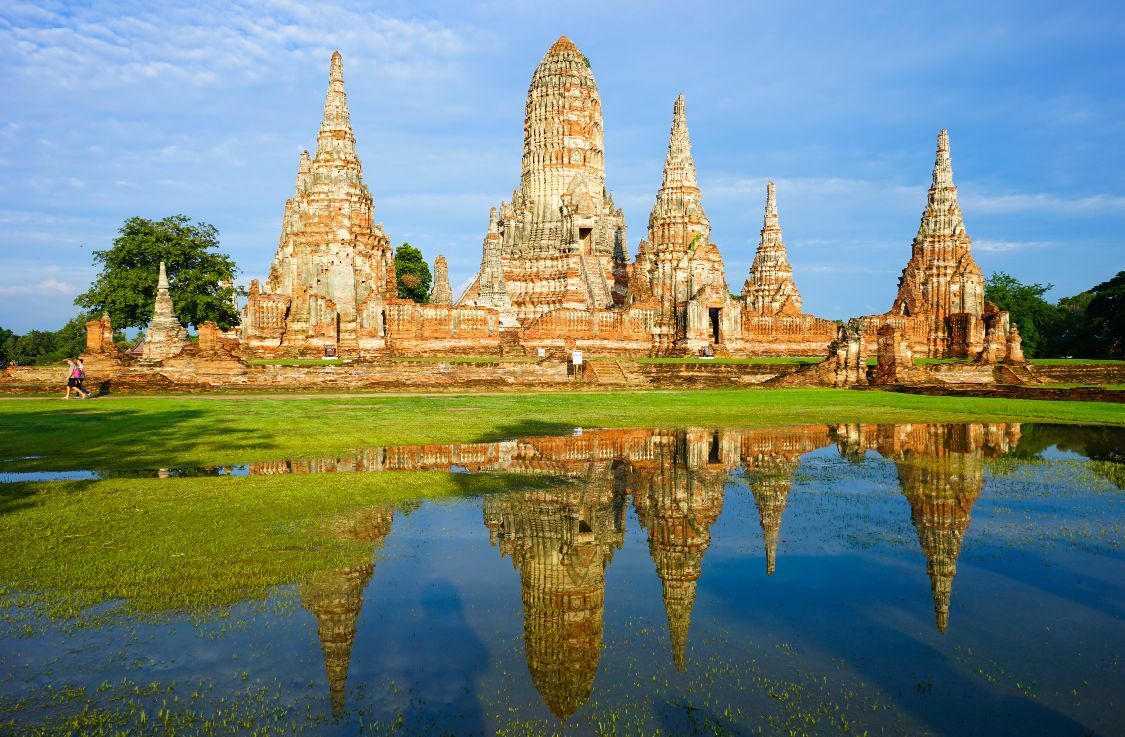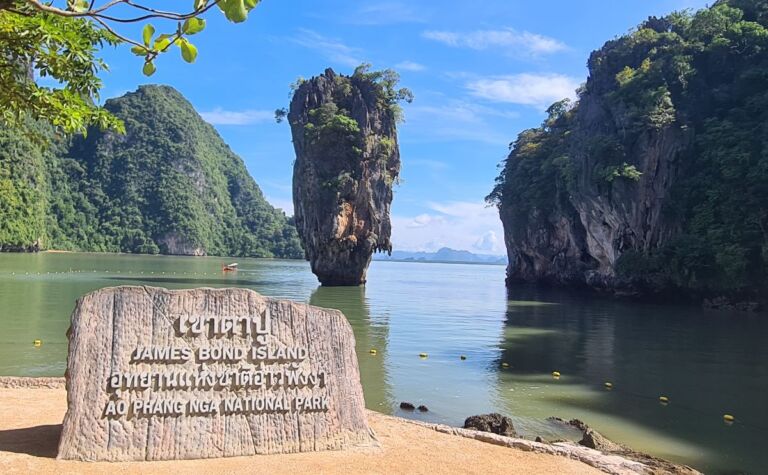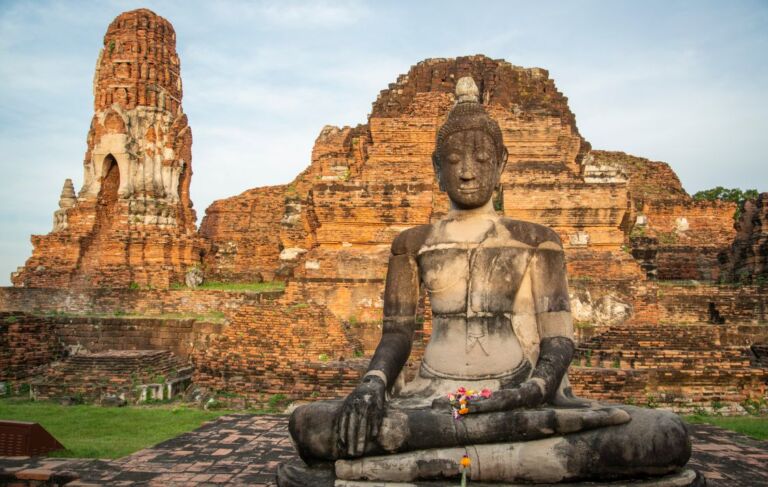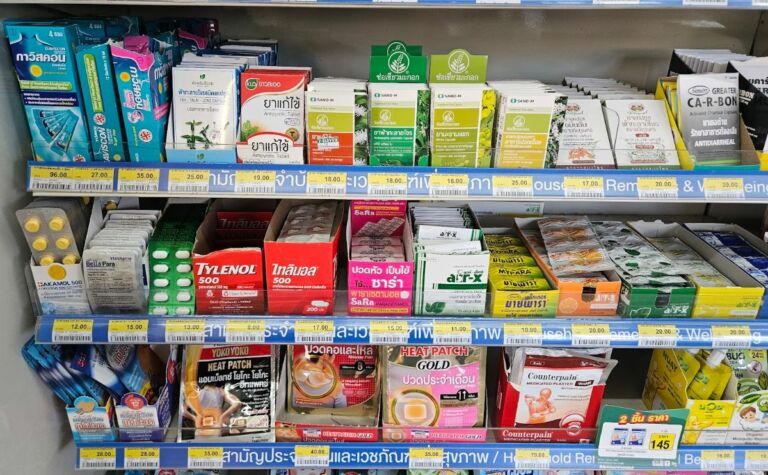Rainy Season in Thailand: Is It Still Worth Visiting?
The easy answer is YES, the rainy season in Thailand is worth visiting! There are many reasons why you should still come to Thailand during the wet months. I’ve experienced eight rainy seasons since I’ve been here, and it’s now my favourite time of the year. Here’s my full coverage of what to expect during the season, the best places to go, and how to enjoy your visit here. I’ll even share some of my experiences of the season in different provinces,
Let’s get started.
This page contains affiliate links. Please see our disclosure policy for more details.
What is Rainy Season like?
When I first arrived in Thailand, I had this giant fear that for 3–6 months of the year, I’d be subjected to day after day of torrential rain. After all, I’m from Sydney, and it’s standard that during winter, we can get up to 5 days of continuous rain. My friends from Seattle in Washington, USA, complain that they can get a week of non-stop rain during winter, and my Irish friends in Dublin tell me it feels like the rain will never end. So I had a right to be nervous.
Thankfully, I was delighted to find that even though, yes; it does rain most days of the season, it’s usually one or two short sharp showers of around 15–30 minutes each, and that’s it. The funny(?) thing about it is that it’s almost always in the afternoon during peak hour—you could practically set your watch to it.
Sure, there are times when it rains for a few days almost non-stop because of a monsoon in either The Philippines or China, and we get the aftermath here. Compared to many other countries, rain here isn’t that full-on.
So when is the rainy season? It differs slightly across the country. Climate change, El Nino and La Nina can also cause havoc and mess up the standard, but here’s when we generally expect the rainy season to hit.
Northern Thailand
The north of Thailand, including cities like Chiang Mai and Chiang Rai, typically experience the rainy season from late May to early October.
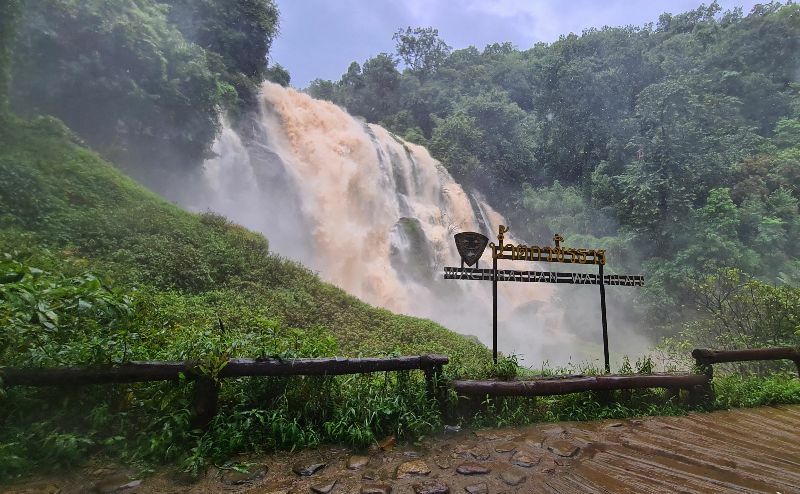
During this period, the average monthly rainfall ranges from 150mm to 200mm, with the heaviest downpours occurring in August and September. At the peak of wet season access to some national parks close and overflowing waterfalls look more like mud than water.
Read more on the weather in Northern Thailand here
Central Thailand
Bangkok and the surrounding provinces of Ayutthaya, Nonthaburi, Phatum Thani, and Nakhon Pathom experience the rainy season between May and October.
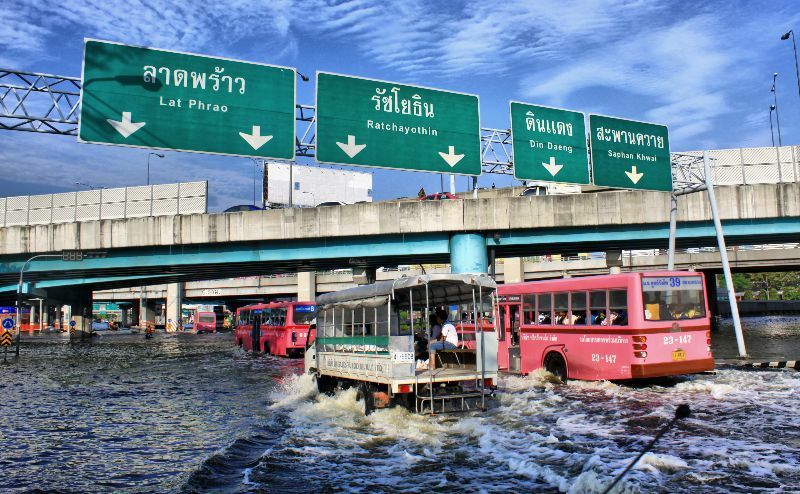
The average monthly rainfall can vary, generally falling between 120mm and 190 mm and peaking in August and September.
Southern Thailand
The southern region of Thailand is split into the east and west coasts, each experiencing the rainy season differently. This means you can almost always find a beach or island that suits year round with perhaps the exception of October, which can be a little more tricky.
The western coast, including Phuket and Krabi, sees its wettest months from May to October, with an average monthly rainfall of 200mm to 350mm.
On the eastern coast, featuring destinations like Koh Samui and Koh Phangan, the rainy season occurs from October to December, with an average rainfall of 150mm to 300mm per month, particularly heavy in November.
The Rain Is Great: The Aftermath, Not So Much
Here’s the thing about the rainy season. During the summer months, there’s little to no rain—in some provinces, that’s up to six months—so by the time it arrives, we’re ready and waiting. But, consider that with no rain for months on end, the drains are all clogged, and new properties, roads, and railway stations have been built and haven’t been tested for water damage.
The first rain of the season is usually quite heavy and leaves a path of destruction in its wake.
Clogged gutters and drains mean that the water has nowhere to go, roads flood, rivers break their banks, and there’s water everywhere. Faults in infrastructure rear their ugly heads during this time, and clean-ups need to be done.
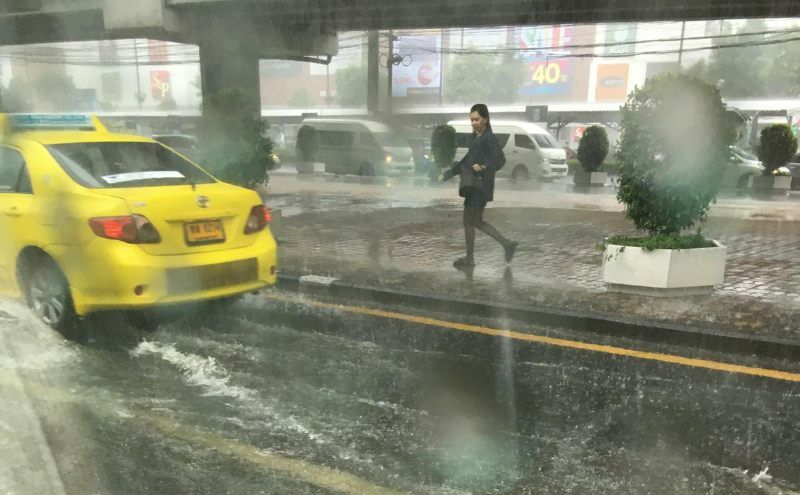
The timing of the sudden downpours is never convenient. It’s odd, but it’s almost always around 5 pm, just when everyone leaves work. This transforms Bangkok’s world-famous traffic jams into something more like a city-wide car park. We all learn to live with it and add more time to our schedules to allow for it.
My Experiences With Rainy Season
I’ve grown to love the rainy season. By the time it arrives, I’m over summer, ready to cool off and for everything to be green again. Yeah, by the end of the season, I’m a bit over it and prepared for winter, but for the most part, it’s my favourite season of the year. That’s not to say that it’s all rainbows and unicorns. Here are some examples—Mother Nature 4 vs Me 0.
My first experience with the rainy season was a baptism by fire (well, water, actually). It was January 2017, and I was studying for my TESOL certificate in Phuket. It was the second weekend of the course, and the entire group went to Phi Phi Island, a 40-minute ferry ride from the Phuket jetty. Now, the rainy season usually ends in October in that region, so we figured it would be a great trip. We were wrong!
A late-season storm hit just as we boarded the ferry, so it was a very bumpy ride. A few of the less-seasoned boaters spent the entire trip up the back of the back, hurling their guts out with every bump. Finally, we made it to the island and spent a miserable 24 hours wandering around in ankle-deep water. Don’t believe me? Here’s a photo of me on the day, looking less than impressed with my mini-vacation.

My second experience was in April of the same year. I’d been working at my first job, and we were all preparing for the start of the rainy season. The day it came, it came with a vengeance. We were all in the classroom watching the rain pelt down. After work, we left the school, and as expected, because of four months of clogged drains, the main road was flooded—I’m talking knee-deep water.
It usually took me around an hour to get home by bus, but looking at the queues of people waiting in the rain at the deserted bus stop, I knew I wasn’t going home that night. Luckily, I had a friend who lived nearby, so I took off my shoe, rolled my trousers to my knees and walked the kilometre to his apartment, where he offered me his couch for the night.
Here’s a picture of the water on the road under the bus, taken as I was going to work the next day.
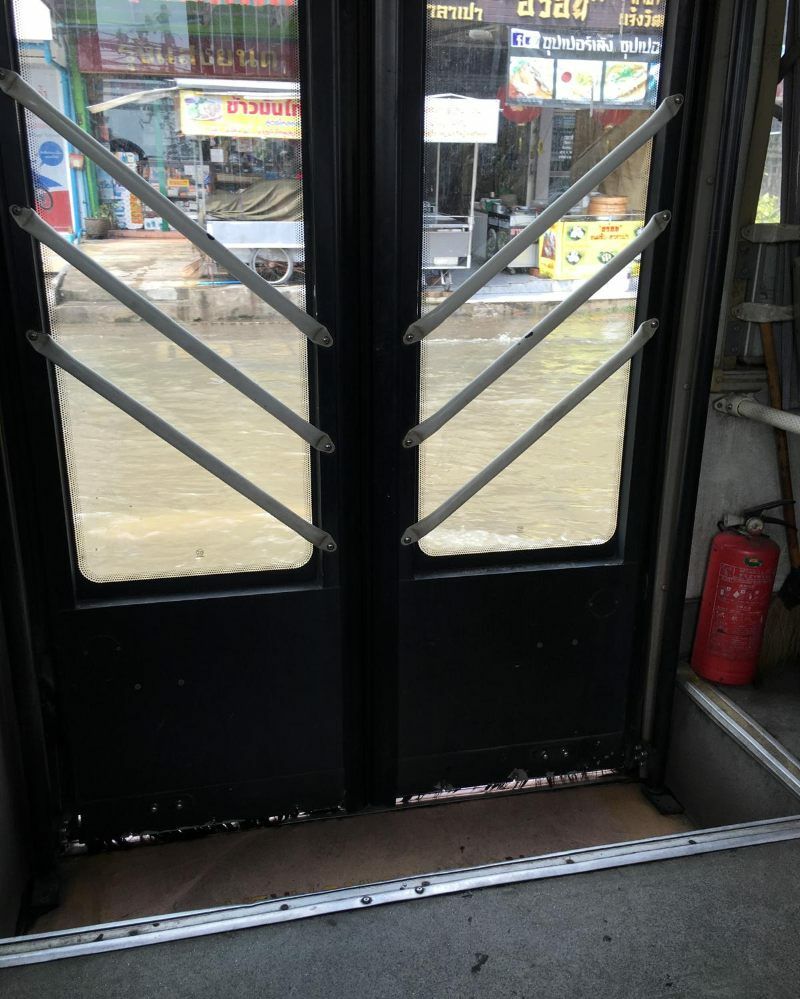
The shot below was when we had a street-front barber shop in a suburb of Nonthaburi. Every afternoon around 4:30 (just as our potential customers were leaving work), it would downpour for the standard 15–30 minutes, flooding the street in front of our shop.
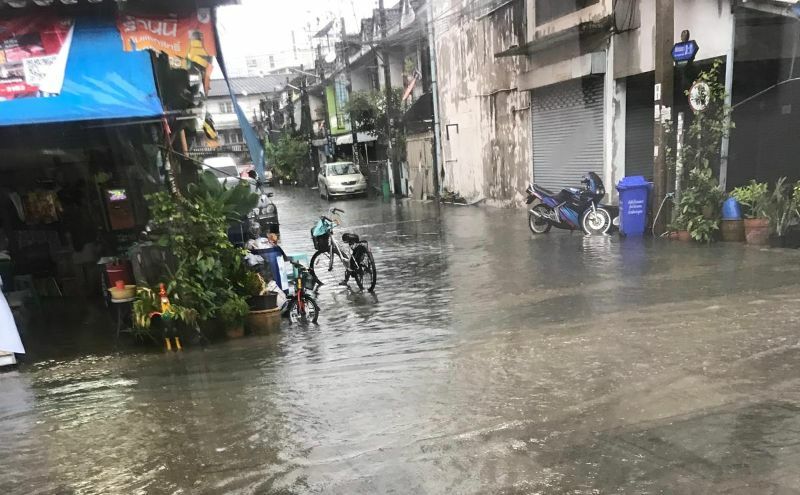
Occasionally, it’d flood so much that fish would appear. Here’s a pic of the flooded street.
Benefits of Travelling to Thailand in Rainy Season
The rainy season is an excellent time to travel to many areas of Thailand. It’s low season, which means fewer tourists and huge discounts on everything from room rates to tours to transport to even some restaurant menus.
Picture this: up to six months of searing heat and no rain, lots of dust, dirt, and smog. Now imagine the same thing two weeks into the rainy season. Everything is lush and green, the air is clearer and fresher, and the temperatures are cooler.
In my opinion, Thailand is at its most beautiful during the rainy season. For those of you whose Instagram page comes alive every vacation, this is the country to visit!
Challenges of Travelling During wet Season
So yes, the rainy season is a great time to visit, but there are some things to keep in mind. As I said earlier, unless it’s the aftermath of a monsoon, you’ll only get a short, sharp shower. Often, though, it comes out of nowhere, and if you’re away from any cover, you’re going to get wet, and I mean drenched.
It’s worth it to carry an umbrella with you all day, even if there are no clouds in the sky when you leave your hotel.
The other challenge is that with rain comes traffic congestion. Cities like Bangkok already suffer from terrible traffic jams, add some water to the mix, and it’s just gets ridiculous.
Plan to be late for everything or to leave hours in advance, especially if you have a plane to catch.
Because the rivers rise much higher during the rainy season, including the Chao Phraya River, which runs through Bangkok, most ferry services are cancelled, as some jetties are underwater. So, if a Chao Phraya Tourist Boat trip is on your itinerary, you may want to check the weather before you head out.
Best Places in Thailand to Visit During Rainy Season
Believe it or not, most of the major tourist destinations are worth visiting during the rainy season. If it’s not during a monsoon, when it can be a bit dismal, you can still enjoy the beach, river, and city destinations that Thailand is famous for.
Here are some places that stand out for me as worth visiting:
The Temple Cities
The temple cities of Chiang Mai, Ayutthaya, and Kanchanaburi are worth visiting during the rainy season. Some of the more majestic temples (Wats) have moats around them that fill up during the season, adding to their splendour.
National Parks
Who doesn’t love a waterfall? During the rainy season, these pop up all over the place, especially in the national parks. While they’re also muddier and a little more dangerous to walk through, if you don’t need to venture too far, you’re in for some incredible views. Khao Lak, Khao Yai and Erawan Falls are the ones to visit.
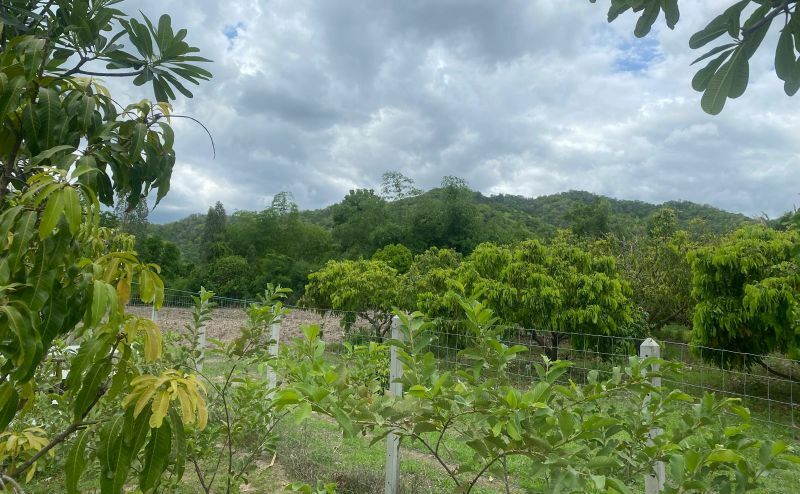
I’ve been told that a waterfall will appear at the mountain in front of my house later in the season. Here’s a photo of the mountain in June; I’ll update this pic when it forms.
Provinces to Reconsider During Rainy Season
While I’ll never suggest any tourist skip any part of this amazing country, some provinces get hit hard by the rainy season and floods. Sadly, some people lose their lives as a result of overflowing rivers and poor drainage systems, resulting in deep waters.
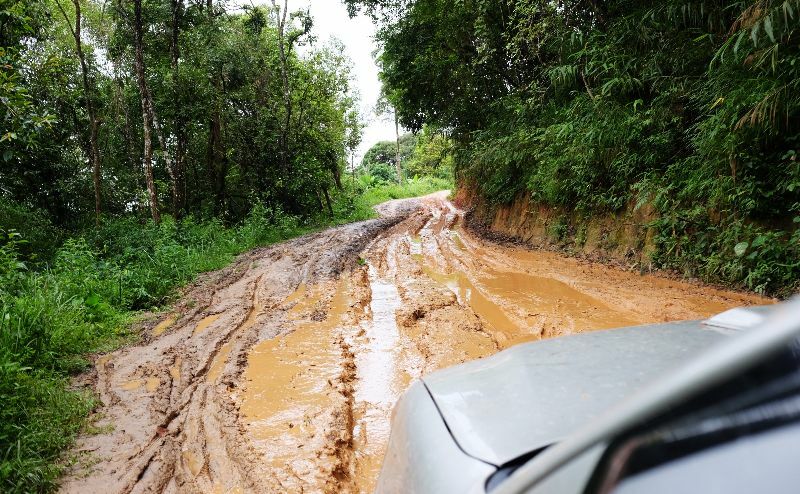
So, for safety’s sake, it’s probably worth reconsidering travel to these provinces at this time and coming back during winter or summer.
- North East: Ubon Ratchathani, Chaiyaphum, Buriram.
- Southern: Surat Thani, Nakhon and Si Thammarat, and during high tides, Trang and Krabi.
Come to Thailand During the Rainy Season
There you have it! As I said, it’s my favourite time of the year, and yes, it’s not all smooth sailing, all day, every day. However, the minor inconvenience of short showers and traffic delays is balanced by the sheer spectacle of Thailand during the rainy season, plus all the money-saving advantages.
I hope to see you here during the rainy season!
Ready to start planning your Thailand trip? Our Facebook community Thailand Awaits is here to help. Join fellow travellers, get your questions answered by Thailand experts, and access free planning resources.

